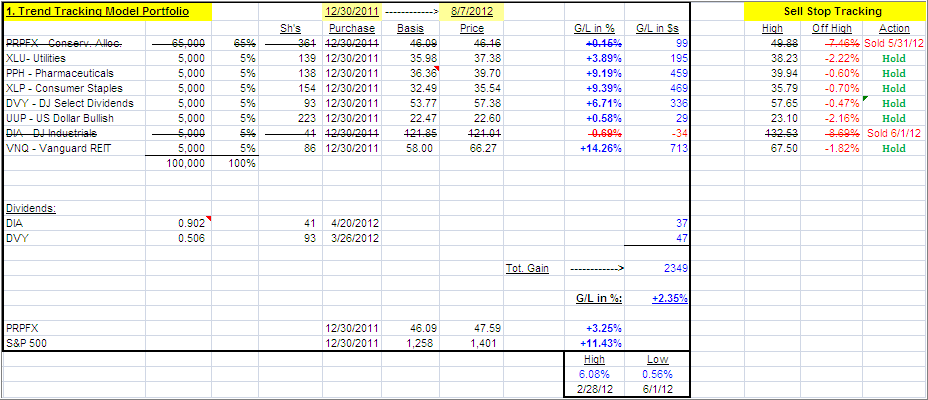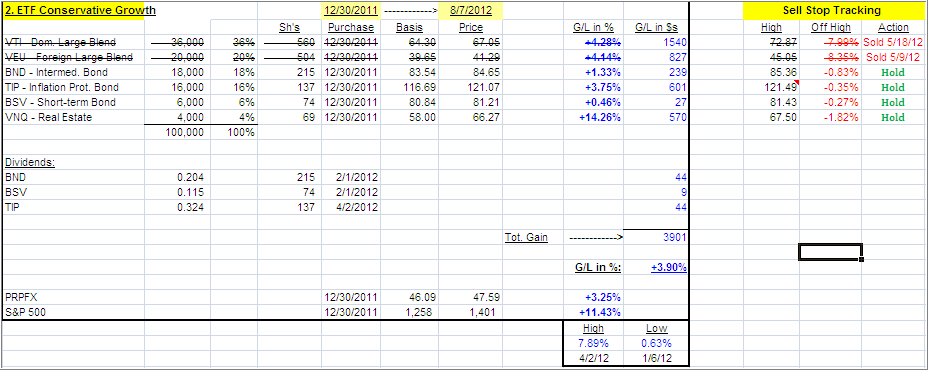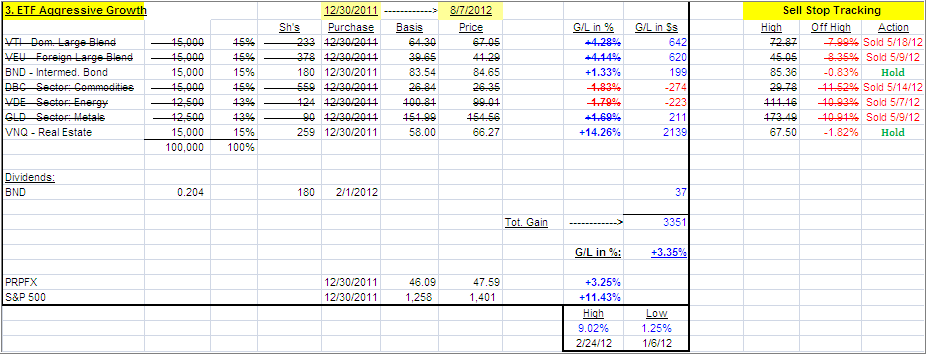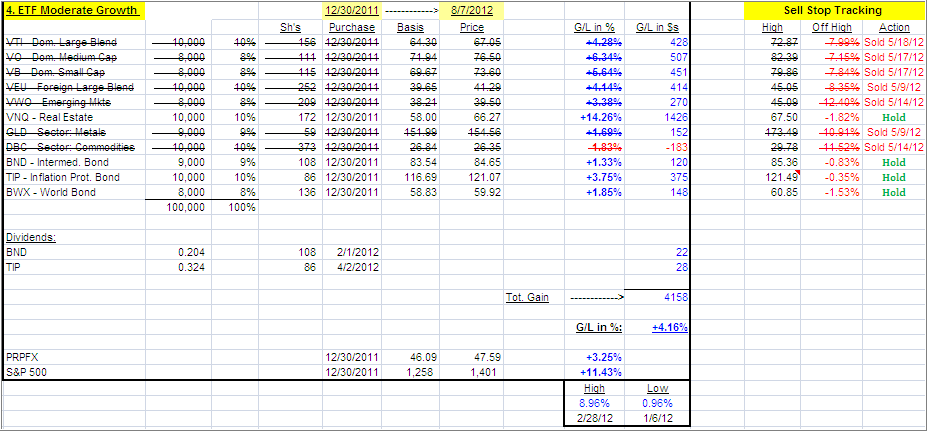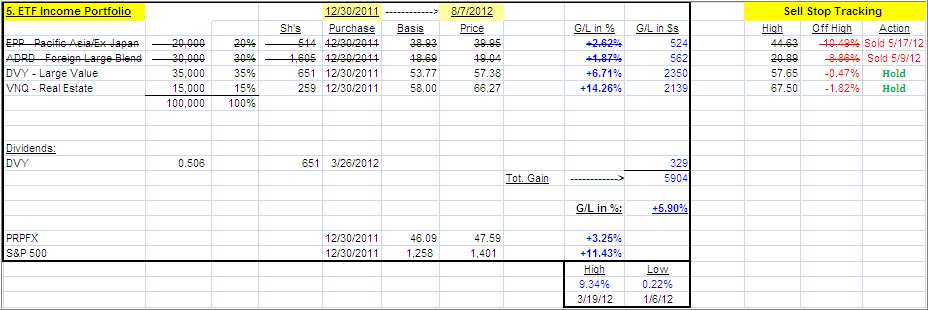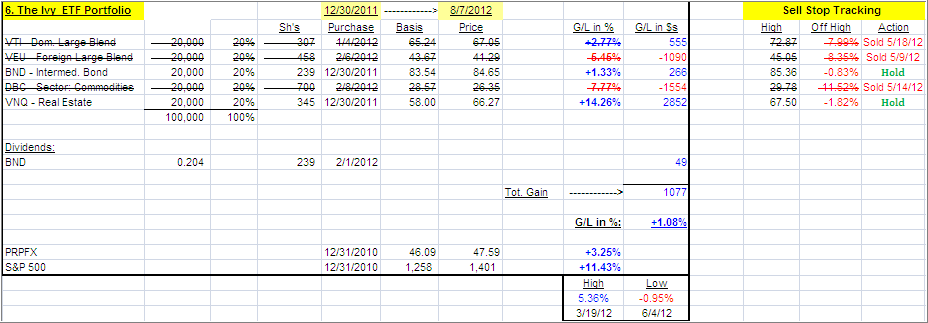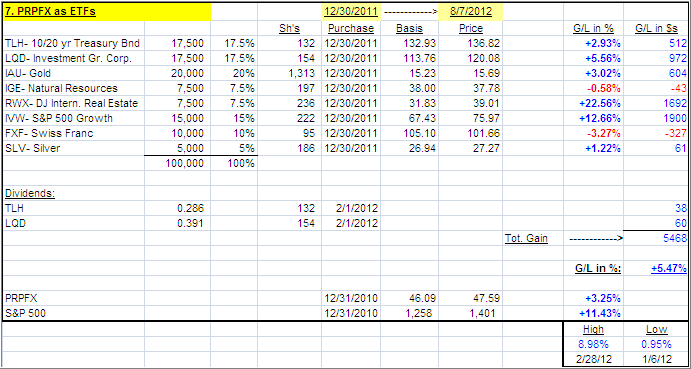Continued optimism that the ECB would act ‘real soon’ to contain the euro debt crisis powered equities higher over the past week with the S&P 500 closing slightly above the 1,400 level for the first time since May.
Obviously, as is always the case at this time of the year, trading volume has been extremely light, which can easily exaggerate moves in both directions.
As I have said before, we may now have reached ‘goldilocks’ territory, where just about all potential positives have been priced in the markets, and where any disappointment in regards to expected outcome or actions by the ECB/FED will have dire consequences.
I believe that there is limited upside potential but accelerated downside risk, which could come into play at anytime. That means, unless you are a very aggressive investor, you would be well served by not adding new money at these levels.
Of course, EU politicians in charge could prove me dead wrong by coming up with more new and innovative ways to postpone the inevitable and, as a result, push markets higher; but so be it.
Looking at the big picture, this is the time to be more concerned with capital preservation rather than capital gains as the downside can come in quickly and without much warning.
In the meantime, here’s the latest model portfolio update:
1. ETF Trend Tracking Model Portfolio
[Click on any table to enlarge]This is the portfolio allocation I have used predominantly in my advisor practice during the first half of 2011. Given those market conditions, and an ever growing number of global hotspots, I liked the concept of having a solid core holding in PRPFX, although we got stopped out in 2011 as a result of the wild market swings along with a sharp pullback in the metals.
Around this fund, when in buy mode, I add what I call boost components consisting of ETFs that can produce higher returns than my core holding, at least during bullish periods. When a market pullback occurs, the core holding should add an element of stability.
Nevertheless, as you know from my writings, anything I invest in involves the use of trailing sell stops, which are shown and tracked on the upper right of the table.
2. Conservative ETF Growth Portfolio
This portfolio, as are the following ones, would be typical of what is being used in the buy-and-hold community, as you can see by the 40% allocation to various bond ETFs. If you are conservative, this simple combination could work for you, but I still recommend the use of the trailing sell stops during these uncertain times.
3. Aggressive ETF Growth Portfolio
What makes this one aggressive is the small 15% allocation to bonds. If you have an aggressive streak in your personality, you could consider this one. If you use my recommended sell stop discipline, you know exactly ahead of time what your downside risk will be.
4. Moderate ETF Growth Portfolio
I call this one moderate growth, because of the higher allocation to various bond ETFs (27%) than in the aggressive set up above. It is also more diversified domestically.
5. ETF Income Portfolio
This is as simple as it gets, but during last year’s sell-off, it dropped in value quickly due to no offsetting bond positions and showed a 0% invested balance by August 2011.
It’ll be interesting to see if this simple combination can withstand the vagaries of the market place in 2012.
6. The Ivy ETF Portfolio
If you missed the recent post about the Ivy portfolio, you can read it here.
This is a simple 5-asset class portfolio with each individual component being bought when it crosses its respective trend line to the upside. Each component is being sold once it crosses its trend lines to the downside again, according to the author’s rules.
I have made 3 adjustments:
1. I apply a 39-week Simple Moving Average (SMA) to generate the Buys, while the authors use a 45-week SMA.
2. As mentioned in the blog post, I prefer using my trailing sell stop discipline for my exit strategy.
3. Personally. I favor using BND (as opposed to IEF) as my bond component, since it has shown more stability in the past.
Currently, only 4 out of the 5 components are positioned above their respective long-term trend lines and therefore in bullish territory. Should upward momentum improve, we may get to a 100% invested position.
7. The ETF Equivalent of PRPFX
As posted recently, I have created and back tested the ETF equivalent of my favorite mutual fund, PRPFX, which is a core holding in my #1 Portfolio. If you missed it, you can read the announcement here.
Take a look at the combination of ETFs:
Since these 8 ETFs represent only one fund, namely PRPFX, we can to apply a different exit strategy. For that purpose, I will not track the high points made for each ETF, as with the other 6 models, but measure my 7% drop from the high point this entire portfolio has made.
Alternatively, you can sell this entire portfolio once our domestic TTI has crossed into bear market territory or hold on to only those positions that are maintaining upward momentum. That solves the issue of “what to buy” if you had liquidated 100%.
(ETF trading costs are not included in these portfolios demonstrations. They are intended to show market effects on different scenarios only as an educational tool)
To repeat, the key to selecting a portfolio from the above list is not just performance. Personally, I’d rather lag a little on the upside but have some assurance that I will also lag when the downside comes into play.
I will update these portfolios every Wednesday.
Quick Reference:
Disclosure: I may have client holdings in some of the funds/ETFs discussed above
Contact Ulli
